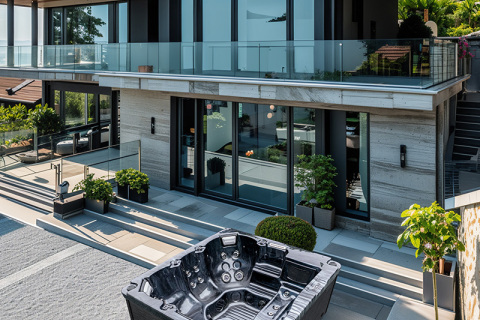
News
Acrylic has good heat resistance, but may experience slight thermal expansion in high-temperature environments. Generally, acrylic doesn't deform significantly when heated, but it may exhibit slight surface distortion or shrinkage if exposed to extreme heat for extended periods.
One of the most common water temperature regulator failures is the inability to accurately maintain the water temperature within the set range, causing the spa massage bathtub water temperature to be too high or too low. This is typically caused by the following: • Faulty temperature control sensor • Damaged heating element • Control system malfunction
Before installing an outdoor swim spa jacuzzi, you must first determine a suitable location. Outdoor swim spa jacuzzis are large in size and therefore require a suitable space. Selecting an adequate space is one of the most important preparatory steps for installation.
Six major health benefits of an outdoor whirlpool hot tub: 1. Relieves muscle and joint pain 2. Improves sleep quality 3. Reduces stress and anxiety 4. Promotes blood circulation and cardiovascular health 5. Improves skin health 6. Promotes recovery and relieves post-exercise soreness
According to professional recommendations, the water temperature for infants in outdoor spa hot tubs should be between 37°C and 38°C. This temperature range is generally considered suitable for infants' skin and body temperature regulation systems.
Water can be categorized as either soft or hard, depending on the degree of hardness. ·Hard water: Water has high concentrations of calcium and magnesium ions, typically exceeding 120 mg/L. ·Soft water: Water has low concentrations of calcium and magnesium ions, typically below 60 mg/L.
The main water flow modes can be categorized as follows: 1. Jet Stream Mode 2. Pulsating Massage Mode 3. Rotary Whirlpool Mode 4. Air Bubble Mode 5. Cascading Waterfall Mode 6. Cross-Flow Mode 7. Targeted Deep Tissue Mode
When an outdoor spa hot tub is in standard mode, the system strives to maintain the set water temperature, which means the heater will activate frequently to compensate for heat loss. Energy-saving mode, however, does reduce electricity consumption by reducing the heater's operating time or power consumption.
To ensure clean and healthy water, whirlpool spa hot tub water quality management requires the assistance of specialized tools. The following are some common and essential tools: 1. Water quality testing kit 2. Water filter 3. Pump cleaning kit 4. Descaling agent 5. Chemical dosing kit
The water temperature maintenance time of a small outdoor hot tub is closely related to the ambient temperature. If the ambient temperature is low, the water temperature in the spa hot tub will gradually drop due to heat loss. Especially in cold winter months, the water temperature will drop faster than in warm summer months.










